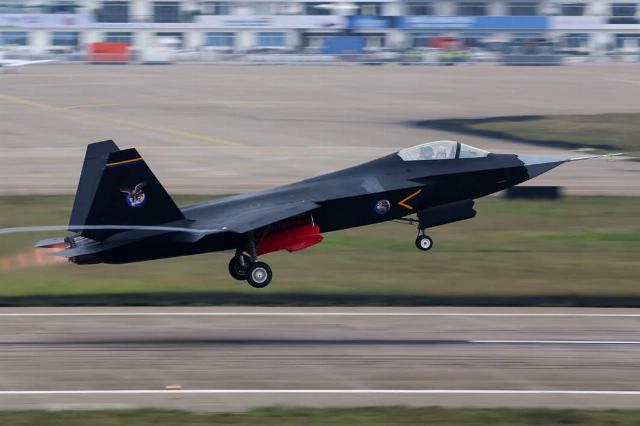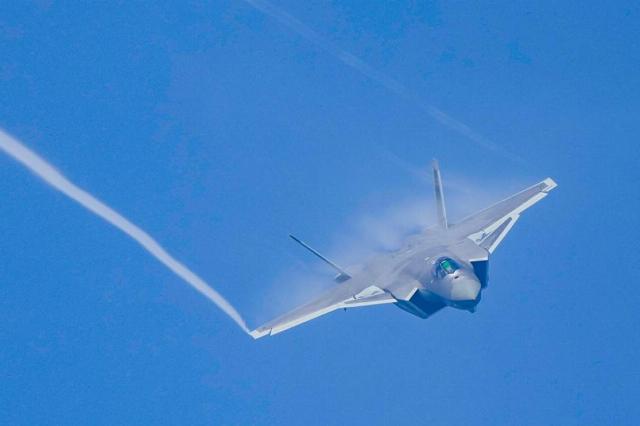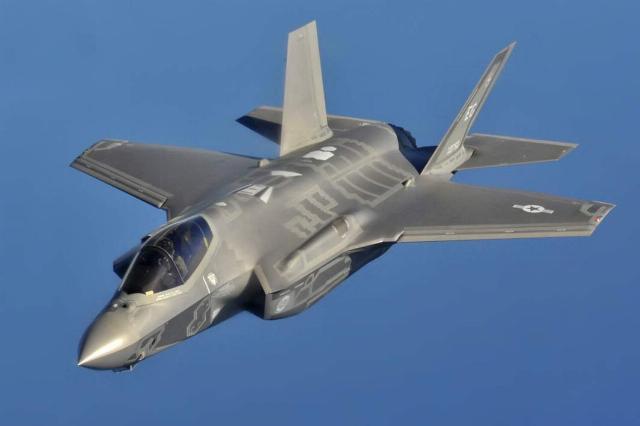It is planned to equip the aircraft carriers under construction with promising fighters
China has begun testing a fifth-generation carrier-based fighter to arm aircraft carriers under construction. This is one of a number of ambitious projects being implemented in this country. How the programs for the construction of the latest aircraft in China are developing — in the material of Izvestia.
China creates a new carrier-based fighter for aircraft carriers
A Chinese military pilot on national television reported that the People's Liberation Army of China (PLA) has begun testing a new generation carrier-based fighter. At the same time, the report did not show footage of the tests themselves or the new aircraft, but presumably we are talking about the J-31 (or J-35) aircraft, a modification of the twin—engine fifth-generation fighter FC-31, which made its first flight in 2012.

Shenyang J-31
Image Source: Photo: commons.wikimedia.org/wc
Why does China need a fifth-generation carrier-based aircraft? The country is pursuing an ambitious program to build an ocean-going aircraft carrier fleet. Today, the Chinese Navy already has two active aircraft carriers, the Liaoning and the Shandong. At the same time, the Liaoning is a rebuilt Soviet aircraft carrier Varyag, bought by China in 1998. The third aircraft carrier Fujian was launched in 2022, is currently undergoing tests and will be transferred to the fleet in 2025. This ship is already equipped with electromagnetic catapults. And further, China is also building a nuclear—powered aircraft carrier of a completely new project, on which the program for the construction of such ships will most likely not stop. Currently, China uses the J-15 carrier-based fighter based on the Russian Su-33 to arm aircraft carriers. But it is obvious that he plans to re-equip not only his Air Force, but also the aircraft carrier forces with fifth-generation aircraft.
The first Chinese fifth-generation aircraft
One of the most famous projects of Chinese fifth-generation aircraft and, in fact, the Chinese "firstborn" is the Chengdu J-20 multi-purpose fighter. Since its first flight in 2011, it has attracted considerable attention from military experts and aviation enthusiasts around the world. China considers this aircraft to be the fifth generation, despite some formal differences: for example, the aircraft uses an engine with Russian roots, which was clearly created for aircraft of previous generations. But the J-20 became the fourth new generation aircraft to take off in the world — after the American F-22 Raptor, F-35 Lightning II and the Russian Su-57.

Chengdu J-20
Image source: Photo: TASS/VCG
Like other fifth-generation aircraft, the J-20 is designed with an emphasis on radar visibility reduction technologies. The use of radio-absorbing materials, internal armament compartments and special shapes of the aircraft's outer contours help minimize the reflection of radar waves. The J-20 is equipped with modern avionics, including an active phased array radar (AFAR), which allows you to detect and track many targets over long distances. The armament includes air–to–air and air-to-ground missiles with the possibility of using a wide range of air–to-ground weapons. Russian engines are used on the J-20, but China is striving to equip the aircraft with its own promising engines, which are under development.
After completing the tests, starting in December 2016, the J-20s join the regiments of the PLA Air Force. Aircraft are being built at a high pace, and now, probably, there are already about 200 J-20s in the Air Force. That is, the Chinese Raptor has most likely already equaled its American counterpart.
What are the prospects for China in the field of creating the latest aircraft
But the J-20 belongs to heavy fighters, and China has bet on several variants of fifth-generation aircraft at once. And a year later, the J-20 made its first flight more compact and made according to the classic aerodynamic scheme of the Shenyang FC-31. Initially, Russian engines were used on the aircraft, but later Chinese WS-13s are installed on those samples that are being tested. The aircraft is being tested and, in addition to becoming a prototype for a new carrier-based fighter, it is also apparently planned to be exported. And in the global market, the aircraft is positioned as a less expensive competitor to the American F-35. As such, it will clearly have a serious potential for export supplies. Moreover, the Chinese aircraft is equipped with two engines, unlike the overseas F-35. And this means greater reliability at a lower cost — that is, it is a unique advantage.

F-35A OF THE United States Air Force
Image Source: Photo: commons.wikimedia.org/Master Sgt. Donald R. Allen
On the basis of the second Chinese fifth—generation fighter, a new machine was created - an option for basing on aircraft carriers. In 2021, the first flight was made by a prototype of a new fighter, which was created on the basis of the FC-31 and which received the unofficial designation J-35. A device for launching a catapult appeared on the deck aircraft and the airframe was upgraded — the wing was made folding. There are other minor changes in the design, but the main thing remains the same as in the FC-31: two engines, the latest avionics, an enclosed weapons compartment. And now it is this aircraft that has entered the full-fledged testing program. And it may well be that this program will include flights from the third Chinese aircraft carrier Fujian, which is equipped with catapults (the first two Chinese aircraft carriers, similar to the Russian Admiral Kuznetsov, do not have catapults, take-off takes place using a springboard).

Photo: IZVESTIA/Pavel Volkov
Image source: iz.ru
Thus, today China is becoming one of the leaders in the creation and production of fifth-generation fighters in the world. Yes, Chinese cars still use less advanced engines than on American or Russian similar aircraft. But otherwise, these aircraft meet all the criteria that are currently applied to the most modern aviation technology. And China's industrial capabilities, of course, are impressive — there is no doubt that after the completion of the tests, all new aircraft carriers of the PLA Navy will receive a new deck aircraft.
Dmitry Kornev

